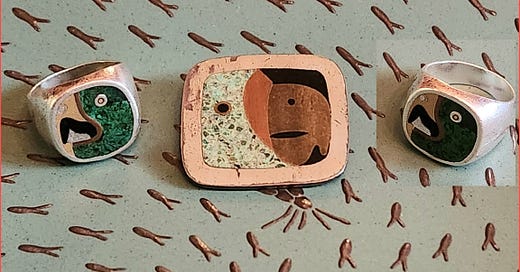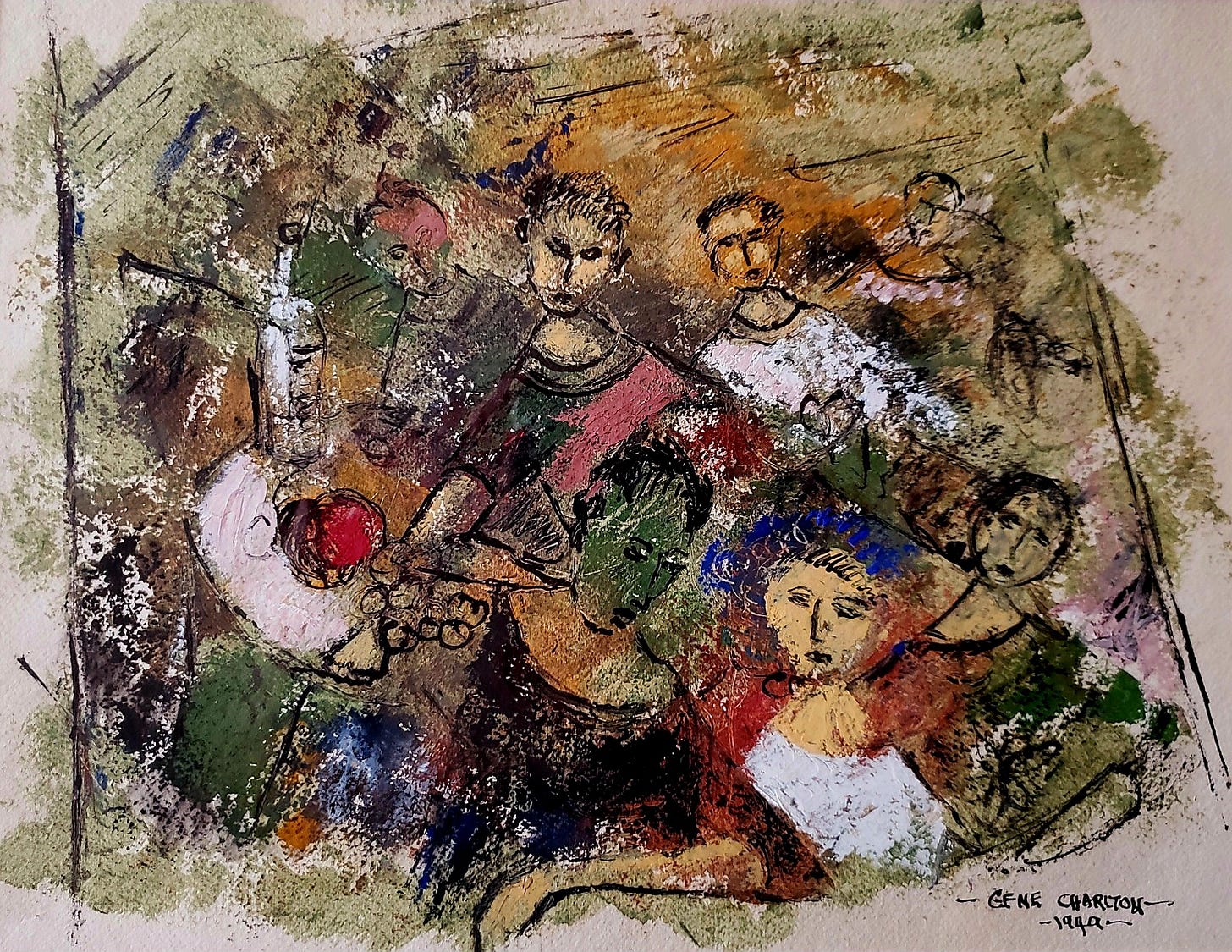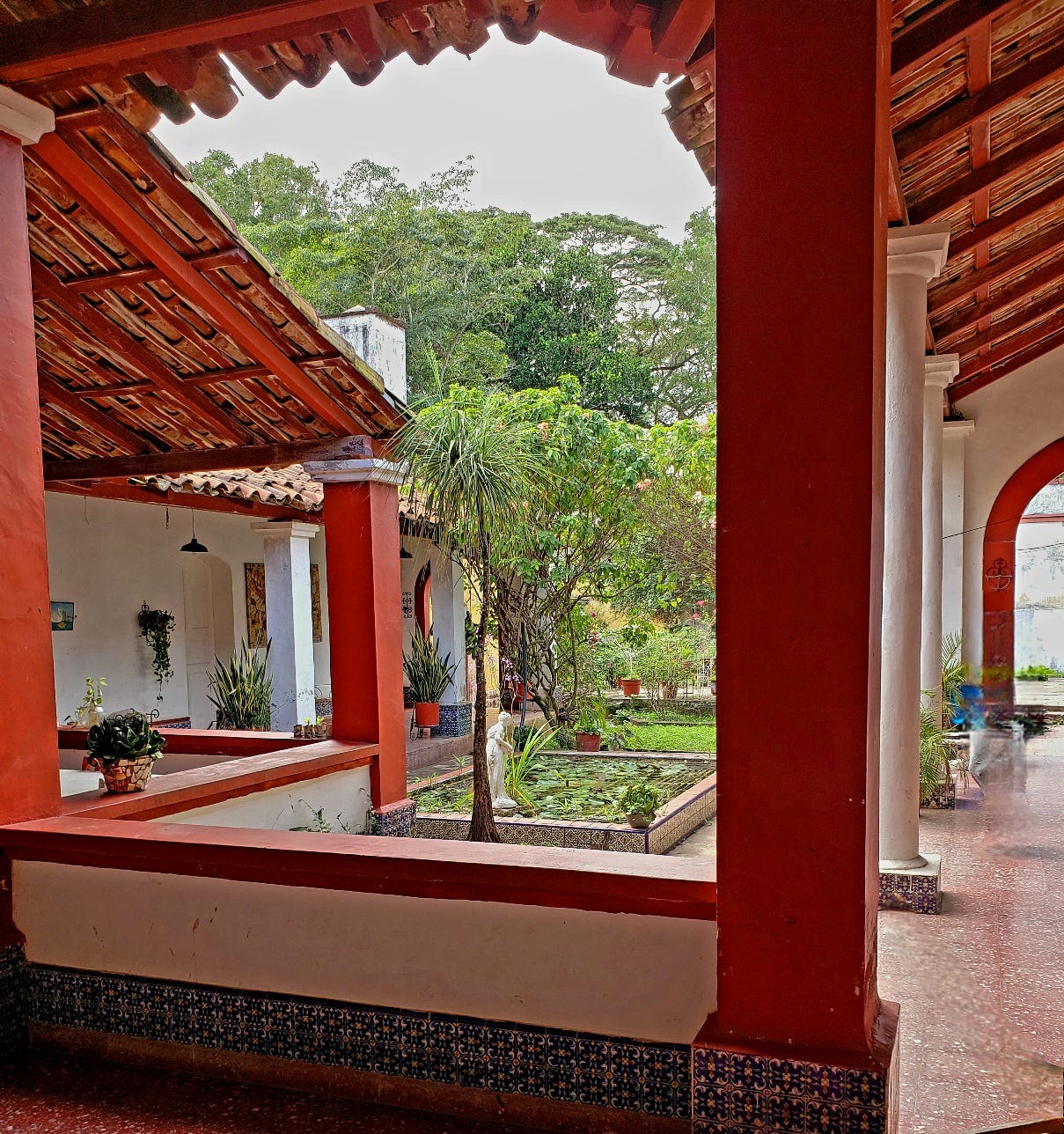An Old Man and His Memories – Part 4: Down Mexico Way
Looking Back at a Long Queer Life
(Note: And so we continue An Old Man and His Memories, the final section of our historical trilogy. Our Narrator, whose memories stretch back to a youth of love and discovery in Paris, told in Song of the Amorous Frogs; and then a middle-age of art and discovery in Houston, continued in Left Bank on the Bayou; has now grown old, and lives his days, as he has for 30 years, in an apartment in the Hawthorne, in St. Louis, and in his memories: an apartment that had once been theirs, now his alone, and memories that had once been theirs – his and so many others in his life – now also his alone, because only he is still alive to remember them.)
When I got up to the apartment – which I called “the” apartment, since I could no longer call it “our” apartment, and saying only “my” apartment still made me sadder almost than I could bear – once I got there, I unwrapped my bundle of Sam Wah laundered shirts and stacked them precisely with their fellows on the closet shelf. A certain old-maidish obsession with orderliness had crept into my habits now that I no longer had any compromises to make with the ways and wishes of others. Though I really should call it old-manish, I suppose, in these modern times, now referring to the old man I had become. It seemed to give me a bit of comfort in my aloneness when everything in my domain had its place, and was in it.
At the bathroom sink I washed my hands. Fastidiousness as regards handwashing had also overtaken me. And as I dried them on the hand towel, I twisted the ring I always wore, the Mexican silver one with a parrot head, inlaid with mixed metals and stones, designed by Tamayo for Los Castillo, they said at the store in Taxco. Was it the one I’d bought for Clem, or was it the one for Our Cellist? I’d bought the same ring for both of them, and a pin of the same design for myself, so that when I walked between them we all sported the same image, a subtle statement of our connection – for those sharp enough to see the personal meaning beyond the subtlety. I saw it; we three knew; even if no one else did.
I’d got them when I went to visit Gene and his new “partner” in Mexico in ‘48. I’d heard already, through Margo, that Gene and Cardy had reunited after the war, and moved to New York, and then parted ways. Ah, New York: that great crucible for the melting down of relationships! Even the most golden of them. It made me sad for them to think about it. And not just for them.
But tomorrow is another day, even for love, and that day, or one of the ones after, had dawned brighter for Gene by the time he wrote this to Margo, who passed his letter on to me:
Cuernavaca
Nov. 4, 1947.
… Margo, we have a beautiful house here, that we’ve rented for a month, which we want to rent for a year! Eight bedrooms, enormous verandah, gardens, swimming pool, gardener, cook, and for so little $.
We thought it might be fun to keep it – and rent out rooms just to people we know – at cost. It’s in one of the most beautiful parts of Cuernavaca – and god knows beats any hotel.
You must imagine me, here, stark mad, with all of this amazing beauty. Never felt anything like it.
Love again,
Genie
When summer came, and I found myself on my own – with Clem off to a family gathering on Lake Michigan, and Our Cellist at a music festival somewhere in high mountains, I wrote Gene asking if I might still be numbered among those “people we know” of his letter.
His reply came as quickly as the international mail could bring it – and I made my way to Mexico – aboard the "Aguila Azteca" – Aztec Eagle – via San Antonio and Laredo. I might have stopped in Dallas, city of Margo’s new home and theater, had she not already embarked on some frenetic summer theatre tour. Or in Houston, which I had not visited since my move to St. Louis, but Mrs. Cherry had written that she hoped to decamp to a cooler summer clime with her daughter and grandson; and McNeill no longer lived in the city; and almost all the others, my others, had gone away to other lives – all those who had once made Houston a home-place for me, even a queer space in which to live a queer life with other queers – “people like me,” as Forrest had said when he came to Houston in search of those of us like him, who would make at least a small corner of the world a safe place, at least a small part of the time. What point in stopping in a city now hollow for me, without a reason? And so I flew on the Eagle as quick as it would take me, to the Aztec lands.
The Cuernavaca house was enormous, the gardens lush, the cook an Aztec kitchen magician. I relished the time catching up with Gene – and seeing all his new work, infused with the colors of Mexico. His new partner, Jon, a jewelry dealer hoping to become the merchant prince of the Mexican silver renaissance in the Texas market, had his charms – though nothing near Cardy’s beauty, but beauty isn’t everything, I suppose (sigh).
Their Cuernavaca circle glowed with the same rich sheen as William Spratling’s silver. The circle included Spratling himself, in fact, who took a group of us sailing aboard his yacht out of Acapulco one delightful afternoon – Gene and Jon, of course; Herbert Harmon, jewelry designer, and wife (“Yes, surprisingly he married,” to adapt a friend’s comment about someone else); an American cousin of Winston Churchill; from the movie world, the head of publicity for R.K.O. Mexico; Edna Lewis and her sister Irma, who had organized an art school “down here” – and talked of starting one in Positano, Italy.
The Harmons invited me to stay, should I want a bed in Mexico City.
“The Harmons are all enthusiasm for what I’ve done already,” Gene said. “In fact, they want to give me a show at their place in Mexico City – as they think that what I’m doing will go well there, seem to know lots of the right people in the City.”
I gratefully declined their offer, even though Gene assured me that the Harmons’ penthouse, near Reforma, was "très élégante." Why should I leave the serene beauty of Cuernavaca, even for the metropolitan excitement of Mexico City?
Through the days, Gene shared glowing memories: the promises now fulfilled of our little Houston group from the 1930s; the British Neo-romantic gay artists he’d met in England during the war; how touched he was at Margo’s comment in a recent letter, “I think you know how I feel about your great talent – and how very proud I am of you.”
When he spoke of Cardy, his tone turned a little melancholy, and I sensed that he’d left Cuernavaca and that day, at least his spirit had, for another time and place, now lost, but still a little longed for.
Then, in a moment he returned, and outlined his novel plan for selling “futures” in work he had not yet even begun, to supportive stakeholders who would have first choice of those paintings once painted – a way of raising money for living, and renting the house, in Mexico, that would make the painting possible. I overlooked that our talking seemed so much about him and so little about me. Friendships, almost as much as marriages, survive through compromise, for better or for worse. And I had long ago accepted my spot in the background as the price of friendship with Gene.
Our pleasant Mexico life went on for a few weeks, with delicious lunches in the garden paradise beside the idyllic pool, the glittering company coming and going, “Talking of Michelangelo.” I could almost have longed for it to go on forever. Though even with the novel delights, I also longed for the time when I’d be returning to our menage in St. Louis.
Then one afternoon, Gene threw out in passing that Russell had opened a store in Mexico City, not far from the Harmons, on Florencia Street, selling Mexican items – paper flowers, bark paintings, “native” dresses – for all the American tourists flocking south. The owner of the shop had dropped an “L,” now only Russel, so Gene had not been sure at first that he was the same, our Russell. He’d been to the shop; had chatted with Russel; had admired the beautiful (of course they were) things he stocked.
The thunder-bolt news stunned me. How could no one have mentioned it to me already? Nothing could have shocked me more: Russell here in Mexico, and people who knew us both knowing it, and not knowing to telegraph the news to me instantly!
The Cuernavaca serenity, fickle as a good hair day, gave way in an instant to turmoil and sleepless nights which would not be tamed until I had made the trip – had seen for myself that this Mexico Russel was indeed my Santa Fe and Houston Russell. Suddenly a visit to Mexico City held added interest, seemed more appealing, became imperative. As soon as I could manage it, I went.








Waiting to find out what happened in Mexico City!